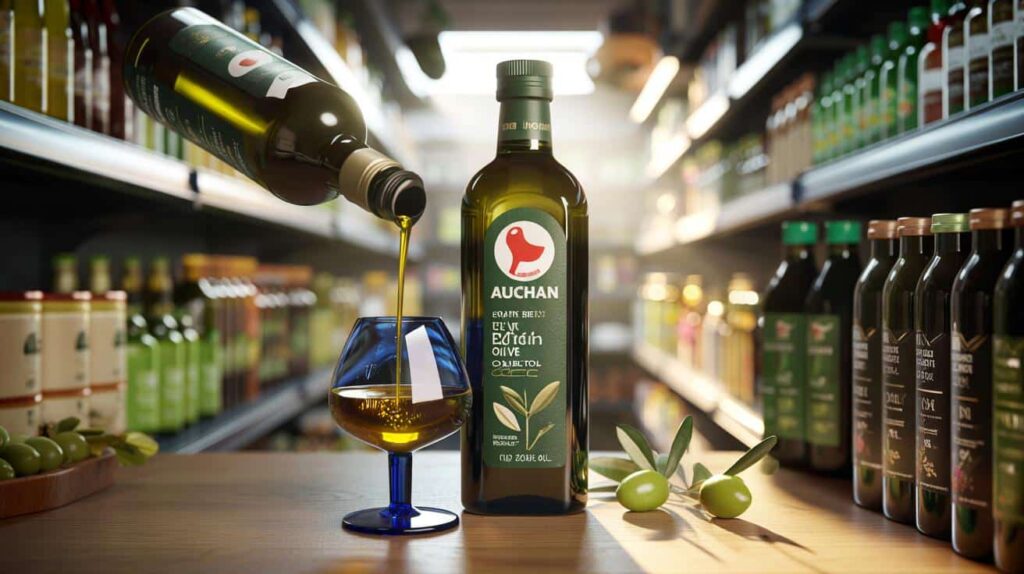Labels shine with commitments to purity. A new consumer test now adjusts expectations.
Olive oil influences everyday cooking and long-term wellness, so consumers seek the ideal bottle. A recent UFC-Que Choisir comparative test provides clarity on the shelves.
Importance of packaging and labels
High-quality olive oil offers aroma, fruitiness, bitterness, and a distinct peppery finish. Quality diminishes quickly when exposed to light, heat, or oxygen.
Packaging plays a crucial role. Dark glass and metal cans safeguard delicate compounds from light. Clear glass may look attractive, but it allows light to enter, accelerating oxidation.
Dark glass and tins protect flavor
Examine the label carefully. “Extra virgin” should be prominently displayed. This classification requires no sensory defects and very low free acidity.
Cold extraction or first cold pressing also indicates careful handling. It signifies that the paste remained cool during separation, aiding in the preservation of polyphenols and fresh characteristics.
Extra virgin on the label, combined with dark glass or a metal tin, and a note of cold extraction: this trio indicates meticulous production and improved preservation.
What extra-virgin truly guarantees
According to international standards, extra-virgin oils exhibit no detectable flaws in a trained sensory panel. Judges assess for defects such as rancidity, mustiness, or off-flavors.
The chemistry must also align. Free acidity remains low. Oxidation indicators stay within strict parameters. The oil should smell and taste clean, fruity, and well-balanced.
Acidity, defects, and cold extraction
Low acidity indicates healthy olives and careful milling. Cold extraction helps maintain natural antioxidants. Together, they enhance stability and flavor.
Labels also include origin information and best-before dates. A harvest date provides even greater transparency. Fresher oil typically has a more vibrant taste.
Which bottle excelled in the test
UFC-Que Choisir evaluated about 14 supermarket extra-virgin oils. The panel assessed flavor, freshness, and compliance. Laboratory analysis screened for contaminants.
The winner: Auchan Bio Extra Virgin Olive Oil. Priced at €15.63, it received a score of 16.3/20 in the latest UFC-Que Choisir test.
Following closely was Monini GranFruttato, with a score of 15.8/20. Bio Vigean, an Italian extra-virgin, secured third place in a competitive finish.
The investigation also highlighted inconsistent quality across the aisle. The report mentions that many lower-priced options originate from Spain or Tunisia, and some premium bottles had issues as well.
Comparison of the shortlisted products
| Brand and product | Category | Score (/20) | Price (EUR) | Test notes |
|---|---|---|---|---|
| Auchan Bio Extra Virgin | Organic extra virgin | 16.3 | 15.63 | Top overall score in supermarket selection |
| Monini GranFruttato | Extra virgin | 15.8 | — | Second place, strong sensory profile |
| Bio Vigean (Italy) | Extra virgin | Third | — | Completed a very close top three |
UFC-Que Choisir combined sensory evaluations with laboratory tests, including contaminant screening, to distinguish compliant extra-virgins from oils that did not meet standards.
Smart shopping tips for olive oil
Consumers can navigate the aisle with a straightforward checklist. It cuts through marketing jargon and emphasizes freshness and safety.
- Select extra virgin; steer clear of vague “olive oil” blends for dressings and finishing touches.
- Opt for dark glass or a metal tin to minimize light damage.
- Look for “cold extraction” and a clear best-before date; a harvest date is even better.
- Check origin details; single-origin or harvest-year blends often provide better traceability.
- Smaller bottles decrease the time oil remains open at home.
- Price can be a guide, but it is not definitive; some expensive bottles perform poorly in blind tests.
Storage, cooking, and value tips
Store the bottle in a cool, dark cupboard, away from the stove. Keep the cap tightly sealed. Heat, light, and air are the three adversaries.
Use within six to eight weeks after opening for optimal aroma. Purchase sizes that can be consumed within that timeframe.
Extra-virgin is suitable for sautéing and roasting at moderate oven temperatures. Most quality oils can handle typical home cooking heat without issues.
Reserve your most aromatic bottle for dressings, dips, and finishing. Use a reliable mid-range oil for daily cooking tasks.
Benefits of tasting at home
A quick home test sharpens your selection skills. Pour a tablespoon into a small cup. Warm it in your hand. Smell it, then take a sip.
Fruity notes may include green apple, tomato leaf, or almond. Bitterness lingers on the palate. A peppery sensation in the throat indicates polyphenols.
Warning signs include waxy crayon, stale walnuts, or a muddy cellar aroma. These suggest oxidation or poor-quality olives.
Understanding contaminant checks
Consumer tests search for residues and processing indicators. Pesticide residues can slip through due to inadequate sourcing. Mineral oil hydrocarbons may originate from packaging or logistics.
Compliant oils meet strict thresholds and show no defects in panel tastings. This dual standard—laboratory and sensory—ensures both safety and flavor expectations.
Importance of results for frequent users
Many households use olive oil daily. Mediterranean-style diets rely heavily on it. When usage is frequent, quality and compliance become even more critical.
A consistent bottle keeps dishes fresh and easy to digest. It also supports the balance of unsaturated fats that people seek from olive oil.
Practical tips for savvy shoppers
Rotate oils throughout the year. Try one bottle from a proven test winner for salads, along with a reliable, good-value extra-virgin for cooking. Keep track of which bottles you finish quickly and which flavors you enjoy. Your notes will help guide your next purchase better than any shelf label.
If you prefer numbers, set a simple monthly budget for olive oil and divide it between two bottles. One splurge for aromatic uses, and one versatile option for cooking. This approach often maximizes flavor per euro and minimizes waste.
Source: UFC-Que Choisir comparative test on supermarket extra-virgin olive oils.








